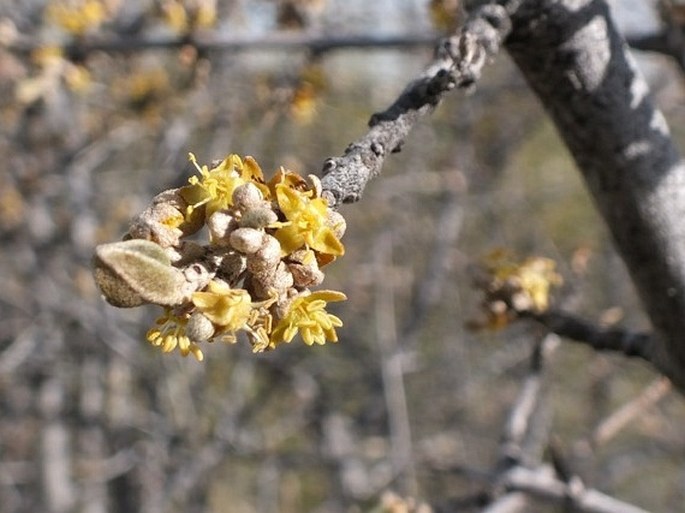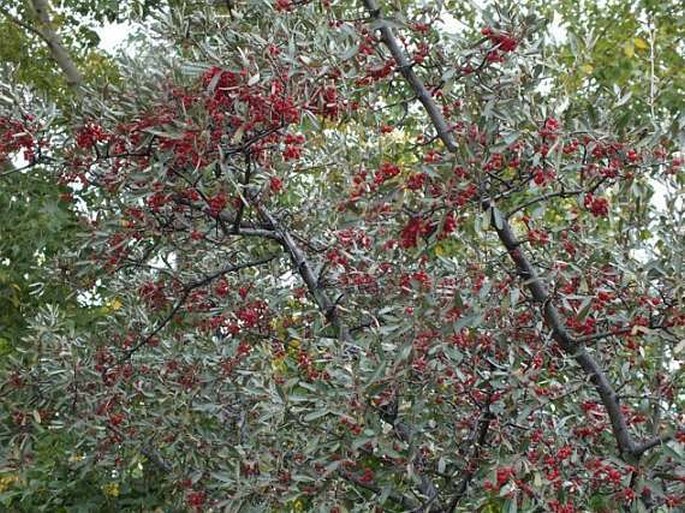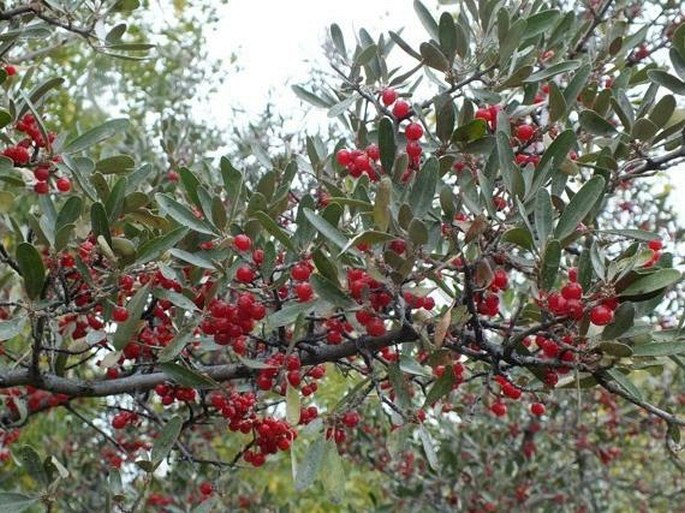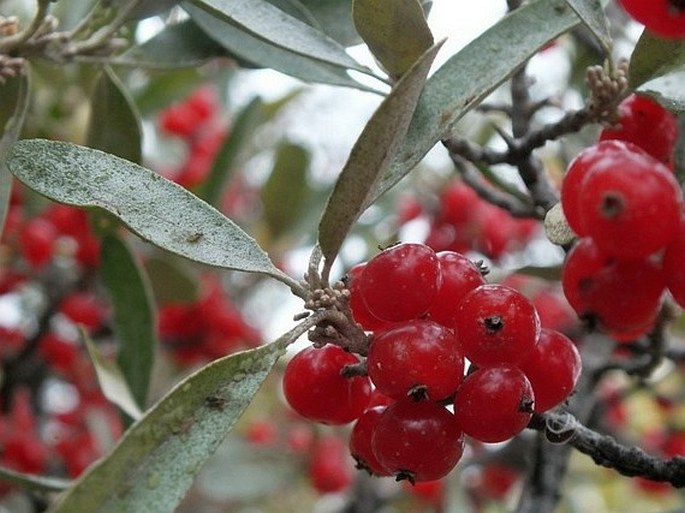Syn.: Hippophaë argentea Pursh
Family: Elaeagnaceae Juss.

Distribution: North America species found in southern Alberta, Saskatchewan and Manitoba in Canada and in US mainly in Montana, Wyoming, Utah and in parts of Dakotas, Iowa, Colorado, Nevada and California and New Mexico. Secondarily in parts of Oregon and Arizona.
Ecology: Open woods and hillsides. Blooms in May and June.

Description: Tall shrub or small tree, 1–6 m high, dioecious, branches spiny, young branches silvery white. Leaves opposite, deciduous, oblong to lanceolate, 20–50 × 7–10 mm, silvery, covered with thin scales on both sides, short petioles, smooth margins. Inflorescence is a cyme from leaf axils; flowers yellowish brown, 4 mm across, separate male and female, appearing before leaves; 4 sepals, petals absent; 8 stamens, 1 pistil. Fruit is a berry, red or yellow, 4–6 mm, edible, very tart.
Threat and protection: State of Iowa lists this species as threatened.
Use: Native tribes consumed berries both fresh and dried. The berries contain soapy saponin.







These images were taken in Canada, Alberta, Calgary, Elliston Park (2013 and 2015).


